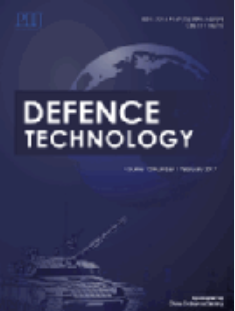The role of isolators in two-phase kerosene/air rotating detonation engines
IF 5
Q1 ENGINEERING, MULTIDISCIPLINARY
引用次数: 0
Abstract
In this study, the three-dimensional non-premixed two-phase kerosene/air rotating detonation engines with different isolator configurations and throat area ratios are simulated by the Eulerian-Lagrangian method. The effects of the divergence, straight, and convergence isolators on the rotating detonation wave dynamics and the upstream oblique shock wave propagation mechanism are analyzed. The differences in the rotating detonation wave behaviors between ground and flight operations are clarified. The results indicate that the propagation regimes of the upstream oblique shock wave depend on the isolator configurations and operation conditions. With a divergence isolator, the airflow is accelerated throughout the isolator and divergence section, leading to a maximum Mach number (∼1.8) before the normal shock. The total pressure loss reaches the largest, and the detonation pressure drops. The upstream oblique shock wave can be suppressed within the divergence section with the divergence isolator. However, for the straight and convergence isolators, the airflow in the isolator with a larger ψ1 (0.3 and 0.4) can suffer from the disturbance of the upstream oblique shock wave. The critical incident angle is around 39° at ground operation conditions. The upstream oblique shock wave tends to be suppressed when the engine operates under flight operation conditions. The critical pressure ratio βcr0 is found to be able to help in distinguishing the propagation regimes of the upstream oblique shock wave. Slightly below or above the βcr0 can obtain different marginal propagation results. The high-speed airflow in the divergence section affects the fuel droplet penetration distance, which deteriorates the reactant mixing and the detonation area. Significant detonation velocity deficits are observed and the maximum velocity deficit reaches 26%. The results indicate the engine channel design should adopt different isolator configurations based on the purpose of total pressure loss or disturbance suppression. This study can provide useful guidance for the channel design of a more complete two-phase rotating detonation engine.
隔震器在两相煤油/空气旋转爆震发动机中的作用
本文采用欧拉-拉格朗日方法对具有不同隔振器构型和不同喉道面积比的三维非预混两相煤油/空气旋转爆震发动机进行了数值模拟。分析了发散隔离器、直线隔离器和会聚隔离器对旋转爆震波动力学的影响和上游斜激波传播机理。澄清了地面和飞行操作中旋转爆震波特性的差异。结果表明,上游斜激波的传播规律取决于隔振器的配置和运行条件。有了散度隔离器,气流在整个隔离器和散度段被加速,导致在正常激波之前达到最大马赫数(~ 1.8)。总压损失最大,爆轰压力下降。利用散度隔离器可以将上游斜激波抑制在散度段内。而对于直线型和会聚型隔振器,在ψ1较大(0.3和0.4)的隔振器内,气流会受到上游斜激波的扰动。在地面工作条件下,临界入射角约为39°。发动机在飞行工况下工作时,上游斜激波有被抑制的趋势。发现临界压力比βcr0能够帮助区分上游斜激波的传播方式。略低于或略高于βcr0可获得不同的边际繁殖结果。发散段的高速气流影响了燃料液滴的穿透距离,使反应物混合和爆轰面积恶化。爆轰速度亏缺明显,最大亏缺达26%。结果表明,发动机通道设计应根据总压损失或抑制干扰的目的,采用不同的隔振结构。该研究可为更完整的两相旋转爆震发动机的通道设计提供有益的指导。
本文章由计算机程序翻译,如有差异,请以英文原文为准。
求助全文
约1分钟内获得全文
求助全文
来源期刊

Defence Technology(防务技术)
Mechanical Engineering, Control and Systems Engineering, Industrial and Manufacturing Engineering
CiteScore
8.70
自引率
0.00%
发文量
728
审稿时长
25 days
期刊介绍:
Defence Technology, a peer reviewed journal, is published monthly and aims to become the best international academic exchange platform for the research related to defence technology. It publishes original research papers having direct bearing on defence, with a balanced coverage on analytical, experimental, numerical simulation and applied investigations. It covers various disciplines of science, technology and engineering.
 求助内容:
求助内容: 应助结果提醒方式:
应助结果提醒方式:


